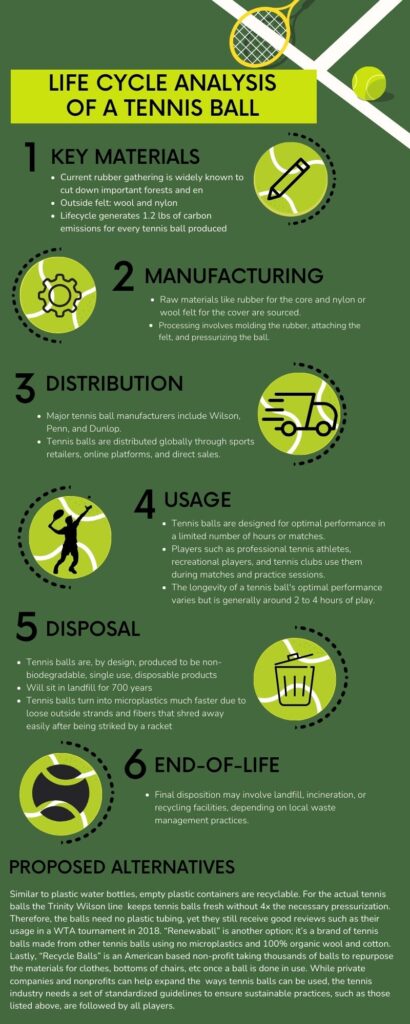
To a a tennis player, a ball isn’t just rubber and felt; it’s a universe of possibilities. It carries the weight of countless hours of practice, the sting of losses, and the thrill of victories. In its fluorescent yellow skin, they find a companion, a nemesis, and a ticket to the sublime dance on the court. The tennis ball is more than an object; it’s a conduit for passion, a vessel for dreams, and the unspoken language of a player’s love affair with the game. For Durham Academy, the number of hours that students put in require much more than just a few tennis balls, but hundreds. Therefore, learning about the life cycle analysis of a tennis ball, bought in large shipments for four teams on campus, is extremely useful to try and mitigate excessive waste and improve disposal.
Despite the fact that The Economic Times explains that “It way take over 400 years to decompose a tennis ball,” there are ~330 million tennis balls manufactured every year.
The tennis industry is worryingly behind pace compared to other sports due to the lack of trustworthy “sustainable” balls. Hence, it was imperative to learn more about what the life cycle looked like and how to find solutions to this enormous problem.
For my project, I created a poster to share with the Durham Academy community my findings, and I included proposed alternative ideas. If you’re interested in tennis or sustainability, feel free to check the poster out to see if you really know what goes on behind the scenes for the world’s most famous racket sport.’
For extra information, I encourage readers to check out Wilson’s Triniti balls and brands like Reneweball. Reneweball’s tennis balls have a 29% lower environmental footprint because each ball is recycled.
Even though major sporting events have made great strides in improving their environmental-friendliness, such as this year’s Tokyo Olympics making medals out of recycled electronics, using 100% renewable energy, and offsetting unavoidable greenhouse gas emissions, the sustainability of individual sports is still lacking. It’s time to change the norm!

Recent Comments